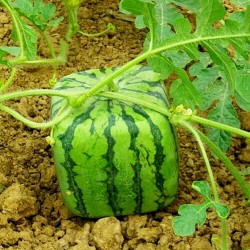Menu
-
MenuBack
- Home
-
Categories
-
-
Categories
-
Vegetable Seeds
-
Varieties by Country
- Varieties from Armenia
- Varieties from BiH
- Varieties from Croatia
- Varieties from France
- Varieties from Germany
- Varieties from Greece
- Varieties from Hungary
- Varieties from India
- Varieties from Italy
- Varieties from Japan
- Varieties from North Macedonia
- Varieties from Peru
- Varieties from Russia
- Varieties from Serbia
- Varieties from Slovenia
- Varieties from Spain
- Varieties from Thailand
- Varieties from Turkey
- Varieties from USA
- Tomato Seeds
- Corn Seeds
- Gourd family
- Bean family
- Cucumber Seeds
- Pepper Seeds
- Carrot family
- Onion family
- Lettuce Seeds
- Potato family
- Cabbage family
- Radish Seeds
- Beetroot family
- Watermelon Seeds
- Melon Seeds
- Cauliflower Seeds
- Sunflower family
-
Varieties by Country
- Fruit Seeds
- Chili - Habanero Seeds
- Medicinal Herb Seeds
- Climbing Plants Seeds
- Trees Bonsai Seeds
- Palm Seeds
- Ornamental Grasses Seeds
- Tobacco Seeds
-
Vegetable Seeds
-
-
-
-
- NEW PRODUCTS
- Create account
- Delivery - Payment
- FAQ
Last Product Reviews
These peppers came all the way from eastern Europe and took a while at no f...
By
 Fitim Berani on 21/09/2023
Fitim Berani on 21/09/2023
Verified Purchase
Last customers
- Tanja, Beograd, Serbia
- Alaa, Alwajh, Saudi Arabia
- ionescu, valu lui traian, Romania
- Lasse, 2900, Norway
- Pete, Cleves, United States
- Stef, Waalwijk, Netherlands
- Sonia, Minervino di Lecce, Italy
- Adrian, Ingolstadt, Germany
- CORINNE, NOTRE DAME DE LONDRES, France
- Dušan, KRAVANY NAD DUNAJOM, Slovakia
- Arno, Ehrenkirchen, Germany
- Costas, LARNACA , Cyprus
- Fulvio francesco, Santa Domenica Talao, Italy
- william, Dun, France
- Aymeric , Saint tricat, France
- Ricard, Sant Celoni, Spain
- Maureen , Enniscorthy Co Wexford , Ireland
- Paul, St. Vigil in Enneberg (BZ), Italy
- Ricardo jorge , Viseu , Portugal
- Radosav, Kragujevac, Serbia
- Sylvie, Neyruz, Switzerland
- Julien, Scionzier, France
- Zoran, Vinca, Serbia
- Josef, Hochdorf-Assenheim, Germany
- Davide, London, United Kingdom
- Kimberly, Victoria, Gozo, Malta
- Saša , Beograd, Serbia
- Ewa, Galway, Ireland
- Ioannis , Kato Achaia, Greece
- Samuele, Milano, Italy
There are 383 products.
Showing 313-324 of 383 item(s)
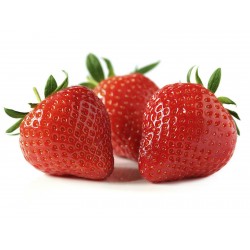
Alba Strawberry Seeds
Price
€1.85
SKU: V 1 A
Seeds Gallery Com,
5/
5
<!DOCTYPE html>
<html>
<head>
<meta http-equiv="Content-Type" content="text/html; charset=UTF-8" />
</head>
<body>
<h2><strong>Alba Strawberry Seeds</strong></h2>
<h2><strong><span style="color: #ff0000;">Price for Package of 100 (0.06g) seeds.</span></strong></h2>
<p>Alba strawberries are very large, long, and uniform. The shape is attractive, fruit flesh very firm, and bright red. The strawberries have a good smell and excellent taste. Alba plants are very strong, they are immune to almost all common diseases. The plants have a good, concentrated ripening period. The strawberries are easy to pick. The plants are susceptible to the herbicide. The fruits can be harvested already in May.</p>
<p><strong><a href="https://www.seeds-gallery.shop/en/home/how-to-grow-strawberries-from-seed.html">How to Grow Strawberries from Seeds</a></strong></p>
</body>
</html>
V 1 A

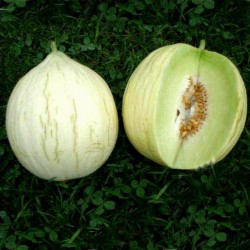
Melon seeds Hógolyó (Snow...
Price
€1.95
SKU: V 243
Seeds Gallery Com,
5/
5
<meta http-equiv="Content-Type" content="text/html; charset=UTF-8" />
<h2><strong>Melon seeds Hógolyó (Snow globe)</strong></h2>
<h2><span style="color: #ff0000;"><strong>Price for Package of 10 seeds.</strong></span></h2>
<p>A Hungarian variety of yellow sugar melon, with proper storage (10 to 12 C) will last until Christmas. We harvest at the end of September before the frosts, the fruits are round, the flesh is green to white, very sweet, and delicious. Fruit weight approx. 1.5 to 2.0 kg</p>
V 243 (10 S)


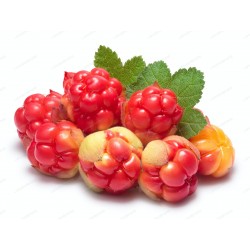
Cloudberry Seeds (Rubus...
Price
€3.85
SKU: V 100 RC
Seeds Gallery Com,
5/
5
<meta http-equiv="Content-Type" content="text/html; charset=UTF-8" />
<h2><strong>Cloudberry Seeds (Rubus chamaemorus)</strong></h2>
<h2><span style="color: #f70606;"><strong>Price for Package of 5 seeds.</strong></span></h2>
<p><i><b>Rubus chamaemorus</b></i><span> </span>is a<span> </span>species<span> </span>of<span> </span>flowering plant<span> </span>in the rose<span> </span>family<span> </span>Rosaceae, native to cool<span> </span>temperate<span> </span>regions,<span> </span>alpine<span> </span>and<span> </span>arctic tundra<span> </span>and<span> </span>boreal forest.<span> </span>This<span> </span>herbaceous<span> </span>perennial<span> </span>produces amber-colored edible fruit similar to the<span> </span>blackberry. English common names include<span> </span><b>cloudberry</b>,<span> </span><b>nordic berry</b>,<span> </span><b>bakeapple</b><span> </span>(in<span> </span>Newfoundland and Labrador),<span> </span><b>knotberry</b><span> </span>and<span> </span><b>knoutberry</b><span> </span>(in England),<span> </span><b>aqpik</b><span> </span>or<span> </span><b>low-bush salmonberry</b><span> </span>(in<span> </span>Alaska<span> </span>– not to be confused with salmonberry,<span> </span><i>Rubus spectabilis</i>),<sup id="cite_ref-3" class="reference">[3]</sup><span> </span>and<span> </span><b>averin</b><span> </span>or<span> </span><b>evron</b><span> </span>(in<span> </span>Scotland).</p>
<h2><span class="mw-headline" id="Description">Description</span></h2>
<div class="thumb tright">
<div class="thumbinner"><img alt="Cloudberry Seeds (Rubus chamaemorus)" src="https://upload.wikimedia.org/wikipedia/commons/thumb/1/1c/Rubus_chamaemorus_LC0151.jpg/230px-Rubus_chamaemorus_LC0151.jpg" decoding="async" width="230" height="307" class="thumbimage" srcset="//upload.wikimedia.org/wikipedia/commons/thumb/1/1c/Rubus_chamaemorus_LC0151.jpg/345px-Rubus_chamaemorus_LC0151.jpg 1.5x, //upload.wikimedia.org/wikipedia/commons/thumb/1/1c/Rubus_chamaemorus_LC0151.jpg/460px-Rubus_chamaemorus_LC0151.jpg 2x" data-file-width="1600" data-file-height="2133" title="Cloudberry Seeds (Rubus chamaemorus)" />
<div class="thumbcaption">
<div class="magnify"></div>
Male flower</div>
</div>
</div>
<p>Unlike most<span> </span><i>Rubus</i><span> </span>species, the cloudberry is<span> </span>dioecious, and fruit production by a female plant requires pollination from a male plant.<sup id="cite_ref-thiem_1-1" class="reference">[1]</sup></p>
<p>The cloudberry grows to 10–25 cm (4–10 in) high.<sup id="cite_ref-thiem_1-2" class="reference">[1]</sup><span> </span>The<span> </span>leaves<span> </span>alternate between having 5 and 7 soft, handlike lobes on straight, branchless stalks. After pollination, the white (sometimes reddish-tipped)<span> </span>flowers<span> </span>form raspberry-sized<span> </span>aggregate fruits<span> </span>which are more plentiful in wooded rather than sun-exposed habitats.<sup id="cite_ref-thiem_1-3" class="reference">[1]</sup><span> </span>Consisting of between 5 and 25<span> </span>drupelets, each fruit is initially pale red, ripening into an amber color in early autumn.</p>
<h2><span class="mw-headline" id="Distribution_and_ecology">Distribution and ecology</span></h2>
<p>In North America, cloudberries grow wild across Greenland, most of northern Canada, Alaska, northern Minnesota, New Hampshire, Maine, and New York.<sup id="cite_ref-thiem_1-8" class="reference">[1]</sup><sup id="cite_ref-5" class="reference">[5]</sup>Cloudberries are a circumpolar boreal plant, occurring naturally throughout the<span> </span>Northern Hemisphere<span> </span>from 78°N, south to about 55°N, and are scattered south to 44°N mainly in mountainous areas and<span> </span>moorlands.<sup id="cite_ref-thiem_1-4" class="reference">[1]</sup><span> </span>In Europe, they grow in the<span> </span>Nordic countries,<span> </span>Baltic states<span> </span>and particularly in<span> </span>Poland.<sup id="cite_ref-thiem_1-5" class="reference">[1]</sup><span> </span>They occur across northern<span> </span>Russia<span> </span>east towards the<span> </span>Pacific Ocean<span> </span>as far south as<span> </span>Japan.<sup id="cite_ref-thiem_1-6" class="reference">[1]</sup><span> </span>Due to peatland drainage and<span> </span>peat<span> </span>exploitation, they are considered<span> </span>endangered<sup id="cite_ref-thiem_1-7" class="reference">[1]</sup><span> </span>and are under legal protection in Germany's<span> </span>Weser<span> </span>and<span> </span>Elbe<span> </span>valleys, and at isolated sites in the English<span> </span>Pennines<span> </span>and<span> </span>Scottish Highlands. A single, fragile site exists in the<span> </span>Sperrin Mountains<span> </span>of<span> </span>Northern Ireland.<sup id="cite_ref-4" class="reference">[4]</sup></p>
<p>Wide distribution occurs due to the excretion of the indigestible seeds by birds and mammals. Further distribution arises through its<span> </span>rhizomes, which are up to 10 m (33 ft) long and grow about 10–15 cm (3.9–5.9 in) below the soil surface, developing extensive and dense berry patches.<sup id="cite_ref-thiem_1-9" class="reference">[1]</sup><span> </span>Cuttings of these taken in May or August are successful in producing a genetic<span> </span>clone<span> </span>of the parent plant.<sup id="cite_ref-6" class="reference">[6]</sup><span> </span>The cloudberry grows in<span> </span>bogs,<span> </span>marshes,<span> </span>wet meadows,<span> </span>tundra<span> </span>and altitudes of 1,400 metres (4,600 ft) above sea level in Norway, requiring acidic ground (between 3.5 and 5<span> </span><i>p</i>H).<sup id="cite_ref-thiem_1-10" class="reference">[1]</sup></p>
<p>Cloudberry leaves are food for<span> </span>caterpillars<span> </span>of several<span> </span>Lepidoptera<span> </span>species. The<span> </span>moth<span> </span><i>Coleophora thulea</i><span> </span>has no other known food plants. See also<span> </span>List of Lepidoptera that feed on Rubus.</p>
<h2><span class="mw-headline" id="Cultivation">Cultivation</span></h2>
<div class="thumb tright">
<div class="thumbinner"><img alt="Cloudberry Seeds (Rubus chamaemorus)" src="https://upload.wikimedia.org/wikipedia/commons/thumb/2/27/Cloudberries.jpg/230px-Cloudberries.jpg" decoding="async" width="230" height="154" class="thumbimage" srcset="//upload.wikimedia.org/wikipedia/commons/thumb/2/27/Cloudberries.jpg/345px-Cloudberries.jpg 1.5x, //upload.wikimedia.org/wikipedia/commons/thumb/2/27/Cloudberries.jpg/460px-Cloudberries.jpg 2x" data-file-width="1448" data-file-height="972" title="Cloudberry Seeds (Rubus chamaemorus)" />
<div class="thumbcaption">
<div class="magnify"></div>
Ripe cloudberries</div>
</div>
</div>
<p>Despite great demand as a delicacy (particularly in Sweden, Norway and Finland) the cloudberry is not widely cultivated and is primarily a wild plant. Wholesale prices vary widely based on the size of the yearly harvest, but cloudberries have gone for as much as €10/kg (in 2004).<sup id="cite_ref-bloomberg-Heiskanen-&-Erkheikki_7-0" class="reference">[7]</sup></p>
<p>Since the middle of the 1990s, however, the species has formed part of a multinational research project. Beginning in 2002, selected<span> </span>cultivars<span> </span>have been available to farmers, notably 'Apolto' (male), 'Fjellgull' (female) and 'Fjordgull' (female). The cloudberry can be cultivated in Arctic areas where few other crops are possible, for example along the northern coast of<span> </span>Norway.</p>
<h2><span class="mw-headline" id="Uses">Uses</span></h2>
<div class="thumb tright">
<div class="thumbinner"><img alt="Cloudberry Seeds (Rubus chamaemorus)" src="https://upload.wikimedia.org/wikipedia/commons/thumb/a/af/Chamaemorus_fruit.jpg/230px-Chamaemorus_fruit.jpg" decoding="async" width="230" height="211" class="thumbimage" srcset="//upload.wikimedia.org/wikipedia/commons/thumb/a/af/Chamaemorus_fruit.jpg/345px-Chamaemorus_fruit.jpg 1.5x, //upload.wikimedia.org/wikipedia/commons/thumb/a/af/Chamaemorus_fruit.jpg/460px-Chamaemorus_fruit.jpg 2x" data-file-width="599" data-file-height="549" title="Cloudberry Seeds (Rubus chamaemorus)" />
<div class="thumbcaption">
<div class="magnify"></div>
Unripe cloudberry</div>
</div>
</div>
<div class="thumb tright">
<div class="thumbinner"><img alt="Cloudberry Seeds (Rubus chamaemorus)" src="https://upload.wikimedia.org/wikipedia/commons/thumb/0/03/Homemade_cloudberry_jam.jpg/230px-Homemade_cloudberry_jam.jpg" decoding="async" width="230" height="154" class="thumbimage" srcset="//upload.wikimedia.org/wikipedia/commons/thumb/0/03/Homemade_cloudberry_jam.jpg/345px-Homemade_cloudberry_jam.jpg 1.5x, //upload.wikimedia.org/wikipedia/commons/thumb/0/03/Homemade_cloudberry_jam.jpg/460px-Homemade_cloudberry_jam.jpg 2x" data-file-width="2618" data-file-height="1752" title="Cloudberry Seeds (Rubus chamaemorus)" />
<div class="thumbcaption">
<div class="magnify"></div>
Cloudberry jam</div>
</div>
</div>
<p>The ripe fruits are golden-yellow, soft and juicy, and are rich in<span> </span>vitamin C.<sup id="cite_ref-thiem_1-11" class="reference">[1]</sup><span> </span>When eaten fresh, cloudberries have a distinctive tart taste. When over-ripe, they have a creamy texture somewhat like yogurt and a sweetened flavor. They are often made into<span> </span>jams,<span> </span>juices, tarts, and liqueurs. In Finland, the berries are eaten with heated<span> </span><i>leipäjuusto</i><span> </span>(a local cheese; the name translates to "bread-cheese"), as well as<span> </span>cream<span> </span>and<span> </span>sugar. In Sweden, cloudberries (<i>hjortron</i>) and cloudberry jam are used as a topping for ice cream, pancakes, and waffles. In Norway, they are often mixed with<span> </span>whipped cream<span> </span>and sugar to be served as a dessert called<span> </span><i>multekrem</i><span> </span>(cloudberry cream), as a jam or as an ingredient in homemade ice cream. Cloudberry yoghurt—<i>molte-</i><span> </span>or<span> </span><i>multeyoughurt</i>—is a supermarket item in<span> </span>Norway.<sup id="cite_ref-8" class="reference">[8]</sup></p>
<p>In<span> </span>Newfoundland and Labrador, Canada, cloudberries are used to make "bakeapple pie" or jam.<span> </span>Arctic<span> </span>Yup'ik<span> </span>mix the berries with<span> </span>seal<span> </span>oil,<span> </span>reindeer<span> </span>or<span> </span>caribou<span> </span>fat (which is diced and made fluffy with seal oil) and sugar to make "Eskimo<span> </span>ice cream" or<span> </span>akutaq.<sup id="cite_ref-thiem_1-12" class="reference">[1]</sup><span> </span>The recipes vary by region. Along the<span> </span>Yukon<span> </span>and<span> </span>Kuskokwim River<span> </span>areas, white fish (pike) along with shortening and sugar are used. The berries are an important traditional food resource for the Yup'ik.</p>
<p>Due to its high vitamin C content,<sup id="cite_ref-thiem_1-13" class="reference">[1]</sup><span> </span>the berry is valued both by<span> </span>Nordic<span> </span>seafarers and Northern<span> </span>indigenous peoples. Its<span> </span>polyphenol<span> </span>content, including<span> </span>flavonoid<span> </span>compounds such as<span> </span>ellagic acid, appears to naturally preserve food preparations of the berries.<sup id="cite_ref-thiem_1-14" class="reference">[1]</sup><span> </span>Cloudberries can be preserved in their own juice without added sugar, if stored cool.<sup id="cite_ref-9" class="reference">[9]</sup></p>
<p>Extract of cloudberries is also used in cosmetics such as shower gels, hand creams and body lotions.</p>
<h3><span class="mw-headline" id="Alcoholic_drinks">Alcoholic drinks</span></h3>
<p>In<span> </span>Nordic countries, traditional<span> </span>liqueurs<span> </span>such as<span> </span><i>lakkalikööri</i><span> </span>(Finland) are made of cloudberry, having a strong taste and high sugar content. Cloudberry is used as a flavouring for making<span> </span>akvavit. In northeastern<span> </span>Quebec, a cloudberry liqueur known as<span> </span><i>chicoutai</i><span> </span>(aboriginal<span> </span>name) is made.<sup id="cite_ref-10" class="reference">[10]</sup></p>
<h2><span class="mw-headline" id="Nutrients_and_phytochemicals">Nutrients and phytochemicals</span></h2>
<p>Cloudberries are rich in<span> </span>vitamin C<span> </span>and<span> </span>ellagic acid,<sup id="cite_ref-thiem_1-15" class="reference">[1]</sup><span> </span>citric acid,<span> </span>malic acid,<span> </span>α-tocopherol,<span> </span>anthocyanins<span> </span>and the<span> </span>provitamin A<span> </span>carotenoid,<span> </span>β-carotene<span> </span>in contents which differ across regions of Finland due to sunlight exposure, rainfall or temperature.<sup id="cite_ref-11" class="reference">[11]</sup><span> </span>The<span> </span>ellagitannins<span> </span>lambertianin C<span> </span>and<span> </span>sanguiin H-6<span> </span>are also present.<sup id="cite_ref-Kahkonen_12-0" class="reference">[12]</sup><span> </span>Genotype<span> </span>of cloudberry variants may also affect<span> </span>polyphenol<span> </span>composition, particularly for ellagitannins, sanguiin H-6, anthocyanins and<span> </span>quercetin.<sup id="cite_ref-13" class="reference"></sup></p>
<p>Polyphenol extracts from cloudberries have improved storage properties when<span> </span>microencapsulated<span> </span>using<span> </span>maltodextrin<span> </span>DE5-8.<sup id="cite_ref-14" class="reference">[14]</sup><span> </span>At least 14<span> </span>volatile<span> </span>compounds, including<span> </span>vanillin, account for the<span> </span>aroma<span> </span>of cloudberries.<sup id="cite_ref-15" class="reference"></sup></p>
<h2><span class="mw-headline" id="Cultural_references">Cultural references</span></h2>
<p>The cloudberry appears on the<span> </span>Finnish<span> </span>version of the<span> </span>2 euro coin.<sup id="cite_ref-16" class="reference">[16]</sup><span> </span>The name of the hill<span> </span><i>Beinn nan Oighreag</i><span> </span>in<span> </span>Breadalbane<span> </span>in the<span> </span>Scottish Highlands<span> </span>means "Hill of the Cloudberries" in<span> </span>Scottish Gaelic.<sup id="cite_ref-17" class="reference"></sup></p>
<h2><span class="mw-headline" id="Harvesting_on_public_property">Harvesting on public property</span></h2>
<p>In some<span> </span>northern European<span> </span>countries such as<span> </span>Norway, a common use policy to non-wood forest products allows anyone to pick cloudberries on public property and eat them on location, but only local residents may transport them from that location and only ripe berries may be picked.<sup id="cite_ref-berryFAO_18-0" class="reference">[18]</sup><sup id="cite_ref-19" class="reference">[19]</sup><sup id="cite_ref-20" class="reference">[20]</sup><span> </span>Since 1970 in Norway, while it has been illegal to pick unripe cloudberries, transporting ripe cloudberries from the harvest location is permitted in many counties.</p>
V 100 RC (5 S)

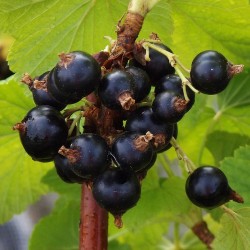
Jostaberry Seeds (Ribes ×...
Price
€1.85
SKU: V 146
Seeds Gallery Com,
5/
5
<!DOCTYPE html>
<html>
<head>
<meta http-equiv="Content-Type" content="text/html; charset=UTF-8" />
</head>
<body>
<h2><strong>Jostaberry Seeds (Ribes × nidigrolaria)</strong></h2>
<h2><span style="color: #f70606;"><strong>Price for Package of 5 seeds.</strong></span></h2>
<p>The<span> </span><b>jostaberry</b><span> </span>(<i>Ribes</i><span> </span>×<span> </span><i>nidigrolaria</i>) is a complex-cross fruit bush in the genus<span> </span><i>Ribes</i>, involving three original species, the black currant<span> </span><i>R. nigrum</i>, the North American coastal black gooseberry<span> </span><i>R. divaricatum</i>, and the European gooseberry<span> </span><i>R. uva-crispa</i>.<sup id="cite_ref-1" class="reference">[1]</sup><span> </span>It is similar to<span> </span><i>Ribes × culverwellii</i>, the Jochelbeere, which is descended from just two of these species,<span> </span><i>R. nigrum</i><span> </span>and<span> </span><i>R. uva-crispa</i>.<sup id="cite_ref-2" class="reference"></sup></p>
<h2><span class="mw-headline" id="Taxonomy">Taxonomy</span></h2>
<p>There was a demand to have gooseberry-type fruits on thornless plants, and the first successful attempt to cross blackcurrant (<i>R. nigrum</i>) with European gooseberry (<i>R. uva-crispa</i>) was carried out by Culverwell<sup class="noprint Inline-Template">[<i><span title="The text near this tag may need clarification or removal of jargon. (June 2020)">clarification needed</span></i>]</sup><span> </span>in Yorkshire, England in 1880.<sup id="cite_ref-Barney2005_3-0" class="reference">[3]</sup><span> </span>This hybrid was termed<span> </span><i>Ribes × culverwellii</i><span> </span>and was nearly sterile.<sup id="cite_ref-Lim2012_4-0" class="reference">[4]</sup><span> </span>Others later carried out direct crosses between blackcurrant and gooseberry, however the<span> </span>diploid<span> </span>seedlings created were sterile and did not produce much fruit, although some fruit was set without fertilization (parthenocarpy).</p>
<p>Jostaberry is frequently mistakenly termed<span> </span><i>Ribes × culverwelli</i><span> </span>as a result of this early F1 diploid hybrid.<sup id="cite_ref-Lim2012_4-1" class="reference">[4]</sup><span> </span>However, Jostaberry is a F2 fertile amphipolyploid hybrid of complex parentage, not a direct cross, and was created later in Germany.<sup id="cite_ref-Lim2012_4-2" class="reference">[4]</sup><span> </span>Paul Lorenz started the process in the<span> </span>Kaiser Wilhelm Institute<span> </span>in Berlin in 1926. In 13 years, over 1000 F1 hybrids were created. Only eight of these survived World War II, and were eventually moved to the Erwin Baeur Institute, which was founded in 1946.<sup id="cite_ref-Barney2005_3-2" class="reference">[3]</sup><span> </span>Randolph Baeur used<span> </span>colchicine<span> </span>to double the number of<span> </span>chromosomes<span> </span>and produce fertile<span> </span>tetraploids.<sup id="cite_ref-Bauer_5-0" class="reference">[5]</sup><sup id="cite_ref-Barney2005_3-3" class="reference">[3]</sup><span> </span>Backcrossing with gooseberry and blackcurrant parents was also involved, creating a new F2 generation. Of 15,000 such crosses, three seedlings were selected based on vigor, disease resistance and fertility.<sup id="cite_ref-Barney2005_3-4" class="reference">[3]</sup></p>
<p>Therefore, jostaberry is descended from two separate first-generation crosses, both of which produced very few fruit.<sup id="cite_ref-Bauer_5-1" class="reference">[5]</sup><span> </span>One of the F1 hybrids used was a cross between the blackcurrant cultivar<span> </span><i>R. nigrum</i><span> </span>‘Langtraubige Schwarze’ (‘Long Bunch’) with<span> </span><i>R. divaricatum</i><span> </span>(also termed spreading gooseberry, Worcesterberry, coastal black gooseberry or by other names). This F1 hybrid was resitant to American gooseberry mildew. The other F1 hybrid parent was a cross between the blackcurrant cultivar<span> </span><i>R. nigrum</i><span> </span>"Silvergieters Schwarze" with<span> </span><i>R. grossularia</i><span> </span>(syn.<span> </span><i>R. uva-crispa</i>) ‘Grune Hansa’.<sup id="cite_ref-Barney2005_3-5" class="reference">[3]</sup></p>
<p>The name<span> </span><i>Jostaberry</i><span> </span>was created by combining the German words for blackcurrant and gooseberry, namely<span> </span><i>Johannisbeere</i><span> </span>("Jo") and<span> </span><i>Stachelbeere</i><span> </span>("Sta"). Following German pronunciation of "J", it may be pronounced "yostaberry" in English.</p>
<p>The first cultivar, ‘Josta’ was made available to the public in 1977. Two later cultivars released were called ‘Jostine’ and ‘Jogranda’.<sup id="cite_ref-Barney2005_3-6" class="reference">[3]</sup><span> </span>A number of varieties have been developed since then by various developers. Named cultivars tend to only be available in Germany,<sup id="cite_ref-Crawford2016_6-0" class="reference">[6]</sup><span> </span>and the names of the three most common jostaberry cultivars have also been confused, and all have sometimes been sold as ‘Josta’.<sup id="cite_ref-Barney2005_3-7" class="reference">[3]</sup></p>
<h2><span class="mw-headline" id="Description">Description</span></h2>
<p>The nearly black<span> </span>berry, which is smaller than a gooseberry and a bit larger than a blackcurrant, is edible both raw and cooked. It is described as having a taste intermediate between a gooseberry and a blackcurrant, with the gooseberry flavor more dominant in the unripe fruit, and the blackcurrant notes developing as the fruit ripens. The ripe fruit will hang on the bush in good condition through late summer, but is very popular with birds. The somewhat unripe fruit can be used in cooking recipes as a gooseberry. Like blackcurrants the fruit freezes well, and like many other members of the genus<span> </span><i>Ribes</i><span> </span>it is rich in<span> </span>vitamin C.</p>
<p>Commercial production of jostaberries is limited because they are not well suited to mechanical harvesting.<span> </span>Compared to most other fruits, harvesting jostaberries is relatively labor-intensive per kilogram. Although harder to pluck than blackcurrants, the plant is thornless.</p>
<p>The plant itself grows to a maximum height of about 2 m, flowering in mid-spring, with fruit setting and ripening on a similar timetable to the blackcurrant. The plant displays<span> </span>hybrid vigor, growing and fruiting well and being resistant to a number of common diseases afflicting other<span> </span><i>Ribes</i>. In particular the plant is resistant to<span> </span>American gooseberry mildew,<span> </span>blackcurrant leaf spot,<span> </span>white pine blister rust, and<span> </span>big bud gall mite. Flowers are hermaphrodite and the plant is self-fertile following insect pollination.</p>
</body>
</html>
V 146 (5 S)

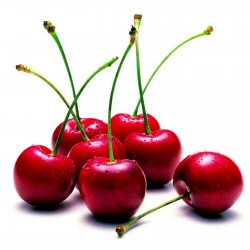
Serbian sweet dwarf Morello...
Price
€1.95
SKU: V 216
Seeds Gallery Com,
5/
5
<h2><strong>Serbian morello cherry seeds (Prunus cerasus)</strong></h2>
<h2><span style="color: #ff0000;" class=""><strong>Price for Package of 10 (2,5g) seeds.</strong></span></h2>
<p>This cherry variety originally comes from Serbia and is over 120 years old. The fruits are extremely large (almost as big as cherries), dark-red in color, and very sweet. The tree reaches a height of approx. 4 meters and a diameter of approx. 2 to 3 meters. The variety is extremely fertile and can deliver over 50 kilograms of cherries in season.</p>
<p>This variety withstood temperatures of - 30 degrees Celsius. However, it is believed that it can easily withstand -40 an more degrees Celsius. It is resistant to diseases and there is no need to use chemical preparations.</p>
<h3><strong>You can read more about cherries on Wikipedia:</strong></h3>
<p><i><b>Prunus cerasus</b></i><span> </span>(<b>sour<span> </span>cherry</b>,<sup id="cite_ref-3" class="reference">[3]</sup><span> </span><b>tart cherry</b>, or<span> </span><b>dwarf cherry</b><sup id="cite_ref-BSBI07_4-0" class="reference">[4]</sup>) is a species of<span> </span><i>Prunus</i><span> </span>in the subgenus<span> </span><i>Cerasus</i><span> </span>(cherries), native to much of<span> </span>Europe<span> </span>and southwest<span> </span>Asia. It is closely related to the sweet cherry (<i>Prunus avium</i>), but has a<span> </span>fruit<span> </span>that is more<span> </span>acidic. Its sour pulp is edible.<sup id="cite_ref-5" class="reference">[5]</sup></p>
<p>The tree is smaller than the sweet cherry (growing to a height of 4–10 m), has twiggy branches, and its crimson-to-near-black cherries are borne upon shorter stalks.<sup class="noprint Inline-Template Template-Fact">[<i><span title="This claim needs references to reliable sources. (December 2013)">citation needed</span></i>]</sup><span> </span>There are two main varieties (groups of<span> </span>cultivars) of the<span> </span><b>sour cherry</b>: the dark-red<span> </span><b>morello cherry</b><span> </span>and the lighter-red<span> </span><b>amarelle cherry</b>.</p>
<h2><span class="mw-headline" id="Origins_and_cultivation">Origins and cultivation</span></h2>
<div class="thumb tright">
<div class="thumbinner"><img alt="Serbian morello cherry seeds (Prunus cerasus)" src="https://upload.wikimedia.org/wikipedia/commons/thumb/e/e4/Illustration_Prunus_cerasus0.jpg/220px-Illustration_Prunus_cerasus0.jpg" decoding="async" width="220" height="359" class="thumbimage" srcset="//upload.wikimedia.org/wikipedia/commons/thumb/e/e4/Illustration_Prunus_cerasus0.jpg/330px-Illustration_Prunus_cerasus0.jpg 1.5x, //upload.wikimedia.org/wikipedia/commons/thumb/e/e4/Illustration_Prunus_cerasus0.jpg/440px-Illustration_Prunus_cerasus0.jpg 2x" data-file-width="1462" data-file-height="2388" title="Serbian morello cherry seeds (Prunus cerasus)" />
<div class="thumbcaption">
<div class="magnify"></div>
Illustration of Morello Cherry</div>
</div>
</div>
<p><i>Prunus cerasus</i>, a<span> </span>tetraploid<span> </span>with 2n=32 chromosomes, is thought to have originated as a natural hybrid between<span> </span><i>Prunus avium</i><span> </span>and<span> </span><i>Prunus fruticosa</i><span> </span>in the<span> </span>Iranian Plateau<span> </span>or Eastern Europe where the two species come into contact.<span> </span><i>Prunus fruticosa</i><span> </span>is believed to have provided its smaller size and sour tasting fruit. The hybrids then stabilised and interbred to form a new, distinct species.<sup id="cite_ref-7" class="reference">[7]</sup></p>
<p>Cultivated sour cherries were selected from wild specimens of<span> </span><i>Prunus cerasus</i><span> </span>and the doubtfully distinct<span> </span><i>P. acida</i><span> </span>from around the<span> </span>Caspian<span> </span>and<span> </span>Black Seas, and were known to the<span> </span>Greeks<span> </span>in 300 BC. They were also extremely popular with<span> </span>Persians<span> </span>and the<span> </span>Romans<span> </span>who introduced them into<span> </span>Britain<span> </span>long before the 1st century AD. The fruit remains popular in modern-day<span> </span>Iran.</p>
<p>In England, their cultivation was popularised in the 16th century in the time of<span> </span>Henry VIII. They became a popular crop amongst Kentish growers, and by 1640 over two dozen named<span> </span>cultivars<span> </span>were recorded. In the Americas, by 1704 the Vestry of<span> </span>New Kent County, Virginia<span> </span>recorded "The DePriest of Kent" planted 354 acres of Prunus cerasus along the<span> </span>Pamunkey River<span> </span>as the 'Kent' variety, that spawned other<span> </span>Virginia<span> </span>colonists throughout Richmond to plant sour cherry trees, 'Early Richmond' variety or 'Kentish Red', when they arrived.<sup id="cite_ref-8" class="reference">[8]</sup></p>
<div class="thumb tright">
<div class="thumbinner"><img alt="Serbian morello cherry seeds (Prunus cerasus)" src="https://upload.wikimedia.org/wikipedia/commons/thumb/5/57/Fr%C3%BChling_bl%C3%BChender_Kirschenbaum.jpg/220px-Fr%C3%BChling_bl%C3%BChender_Kirschenbaum.jpg" decoding="async" width="220" height="166" class="thumbimage" srcset="//upload.wikimedia.org/wikipedia/commons/thumb/5/57/Fr%C3%BChling_bl%C3%BChender_Kirschenbaum.jpg/330px-Fr%C3%BChling_bl%C3%BChender_Kirschenbaum.jpg 1.5x, //upload.wikimedia.org/wikipedia/commons/thumb/5/57/Fr%C3%BChling_bl%C3%BChender_Kirschenbaum.jpg/440px-Fr%C3%BChling_bl%C3%BChender_Kirschenbaum.jpg 2x" data-file-width="2272" data-file-height="1712" title="Serbian morello cherry seeds (Prunus cerasus)" />
<div class="thumbcaption">
<div class="magnify"></div>
A blooming sour cherry tree</div>
</div>
</div>
<p>Before the<span> </span>Second World War<span> </span>there were more than fifty cultivars of sour cherry in cultivation in England; today, however, few are grown commercially, and despite the continuation of named cultivars such as 'Kentish Red', 'Amarelles', 'Griottes' and 'Flemish', only the generic Morello is offered by most nurseries. This is a late-flowering variety, and thus misses more frosts than its sweet counterpart and is therefore a more reliable cropper. The Morello cherry ripens in mid to late summer, toward the end of August in southern England. It is self-fertile, and would be a good<span> </span>pollenizer<span> </span>for other varieties if it did not flower so late in the season.</p>
<div class="thumb tright">
<div class="thumbinner"><img alt="Serbian morello cherry seeds (Prunus cerasus)" src="https://upload.wikimedia.org/wikipedia/commons/thumb/b/bc/SourcherryYield.png/220px-SourcherryYield.png" decoding="async" width="220" height="132" class="thumbimage" srcset="//upload.wikimedia.org/wikipedia/commons/thumb/b/bc/SourcherryYield.png/330px-SourcherryYield.png 1.5x, //upload.wikimedia.org/wikipedia/commons/thumb/b/bc/SourcherryYield.png/440px-SourcherryYield.png 2x" data-file-width="1600" data-file-height="960" title="Serbian morello cherry seeds (Prunus cerasus)" />
<div class="thumbcaption">
<div class="magnify"></div>
Worldwide sour cherry production</div>
</div>
</div>
<p>Sour cherries require similar cultivation conditions to<span> </span>pears, that is, they prefer a rich, well-drained, moist<span> </span>soil, although they demand more<span> </span>nitrogen<span> </span>and<span> </span>water<span> </span>than sweet cherries. Trees will do badly if waterlogged, but have greater tolerance of poor drainage than sweet varieties. As with sweet cherries, Morellos are traditionally cultivated by budding onto strong growing rootstocks, which produce trees too large for most gardens, although newer dwarfing rootstocks such as<span> </span><i>Colt</i><span> </span>and<span> </span><i>Gisella</i><span> </span>are now available. During spring, flowers should be protected, and trees weeded, mulched and sprayed with natural seaweed solution. This is also the time when any required<span> </span>pruning<span> </span>should be carried out (note that cherries should not be pruned during the dormant winter months). Morello cherry trees fruit on younger wood than sweet varieties, and thus can be pruned harder. They are usually grown as standards, but can be fan trained, cropping well even on cold walls, or grown as low bushes.<sup id="cite_ref-9" class="reference">[9]</sup></p>
<div class="thumb tright">
<div class="thumbinner"><img alt="Serbian morello cherry seeds (Prunus cerasus)" src="https://upload.wikimedia.org/wikipedia/commons/thumb/9/9f/Ripe_sour_cherries_on_a_branch.jpg/220px-Ripe_sour_cherries_on_a_branch.jpg" decoding="async" width="220" height="161" class="thumbimage" srcset="//upload.wikimedia.org/wikipedia/commons/thumb/9/9f/Ripe_sour_cherries_on_a_branch.jpg/330px-Ripe_sour_cherries_on_a_branch.jpg 1.5x, //upload.wikimedia.org/wikipedia/commons/9/9f/Ripe_sour_cherries_on_a_branch.jpg 2x" data-file-width="430" data-file-height="314" title="Serbian morello cherry seeds (Prunus cerasus)" />
<div class="thumbcaption">
<div class="magnify"></div>
Ripe sour cherries (Somogy,<span> </span>Hungary)</div>
</div>
</div>
<div class="thumb tright">
<div class="thumbinner"><img alt="Serbian morello cherry seeds (Prunus cerasus)" src="https://upload.wikimedia.org/wikipedia/commons/thumb/9/94/Black_Che.jpg/220px-Black_Che.jpg" decoding="async" width="220" height="163" class="thumbimage" srcset="//upload.wikimedia.org/wikipedia/commons/thumb/9/94/Black_Che.jpg/330px-Black_Che.jpg 1.5x, //upload.wikimedia.org/wikipedia/commons/thumb/9/94/Black_Che.jpg/440px-Black_Che.jpg 2x" data-file-width="2944" data-file-height="2184" title="Serbian morello cherry seeds (Prunus cerasus)" />
<div class="thumbcaption">
<div class="magnify"></div>
Ripe sour cherries and their leaves (Karaj,<span> </span>Iran)</div>
</div>
</div>
<div class="thumb tright">
<div class="thumbinner"><img alt="Serbian morello cherry seeds (Prunus cerasus)" src="https://upload.wikimedia.org/wikipedia/commons/thumb/a/a6/Owoce_Wi%C5%9Bnia.jpg/220px-Owoce_Wi%C5%9Bnia.jpg" decoding="async" width="220" height="220" class="thumbimage" srcset="//upload.wikimedia.org/wikipedia/commons/thumb/a/a6/Owoce_Wi%C5%9Bnia.jpg/330px-Owoce_Wi%C5%9Bnia.jpg 1.5x, //upload.wikimedia.org/wikipedia/commons/thumb/a/a6/Owoce_Wi%C5%9Bnia.jpg/440px-Owoce_Wi%C5%9Bnia.jpg 2x" data-file-width="1024" data-file-height="1024" title="Serbian morello cherry seeds (Prunus cerasus)" />
<div class="thumbcaption">
<div class="magnify"></div>
A sour cherry Beauty Sheet</div>
</div>
</div>
<p>Sour cherries suffer fewer pests and diseases than sweet cherries, although they are prone to heavy fruit losses from<span> </span>birds. In summer, fruit should be protected with netting. When harvesting fruit, they should be cut from the tree rather than risking damage by pulling the stalks.</p>
<p>Unlike most sweet cherry varieties, sour cherries are<span> </span>self fertile<span> </span>or self<span> </span>pollenizing<span> </span>(sometimes inaccurately referred to as<span> </span>self-pollinating). Two implications of this are that seeds generally run true to the cultivar, and that much smaller<span> </span>pollinator<span> </span>populations are needed because<span> </span>pollen<span> </span>only has to be moved within individual flowers. In areas where pollinators are scarce, growers find that<span> </span>stocking beehives<span> </span>in orchards improves yields.<sup id="cite_ref-10" class="reference">[10]</sup></p>
<p>Some cultivars of sour cherry trees, such as Montmorency and<span> </span>North Star, have been documented to perform better than other cherry trees in Colorado's<span> </span>Front Range<span> </span>region.<sup id="cite_ref-11" class="reference">[11]</sup><sup id="cite_ref-12" class="reference">[12]</sup></p>
<table class="wikitable">
<tbody>
<tr>
<th colspan="5">Top 10 sour cherry producers in 2012</th>
</tr>
<tr>
<th>Country</th>
<th>Production (tonnes)</th>
<th>Footnote</th>
</tr>
<tr>
<td align="left"><span class="flagicon"><img alt="" src="https://upload.wikimedia.org/wikipedia/commons/thumb/b/b4/Flag_of_Turkey.svg/23px-Flag_of_Turkey.svg.png" decoding="async" width="23" height="15" class="thumbborder" srcset="//upload.wikimedia.org/wikipedia/commons/thumb/b/b4/Flag_of_Turkey.svg/35px-Flag_of_Turkey.svg.png 1.5x, //upload.wikimedia.org/wikipedia/commons/thumb/b/b4/Flag_of_Turkey.svg/45px-Flag_of_Turkey.svg.png 2x" data-file-width="1200" data-file-height="800" /> </span>Turkey</td>
<td>187,941</td>
<td></td>
</tr>
<tr>
<td align="left"><span class="flagicon"><img alt="" src="https://upload.wikimedia.org/wikipedia/en/thumb/f/f3/Flag_of_Russia.svg/23px-Flag_of_Russia.svg.png" decoding="async" width="23" height="15" class="thumbborder" srcset="//upload.wikimedia.org/wikipedia/en/thumb/f/f3/Flag_of_Russia.svg/35px-Flag_of_Russia.svg.png 1.5x, //upload.wikimedia.org/wikipedia/en/thumb/f/f3/Flag_of_Russia.svg/45px-Flag_of_Russia.svg.png 2x" data-file-width="900" data-file-height="600" /> </span>Russia</td>
<td>183,300</td>
<td>*</td>
</tr>
<tr>
<td align="left"><span class="flagicon"><img alt="" src="https://upload.wikimedia.org/wikipedia/en/thumb/1/12/Flag_of_Poland.svg/23px-Flag_of_Poland.svg.png" decoding="async" width="23" height="14" class="thumbborder" srcset="//upload.wikimedia.org/wikipedia/en/thumb/1/12/Flag_of_Poland.svg/35px-Flag_of_Poland.svg.png 1.5x, //upload.wikimedia.org/wikipedia/en/thumb/1/12/Flag_of_Poland.svg/46px-Flag_of_Poland.svg.png 2x" data-file-width="1280" data-file-height="800" /> </span>Poland</td>
<td>175,391</td>
<td></td>
</tr>
<tr>
<td align="left"><span class="flagicon"><img alt="" src="https://upload.wikimedia.org/wikipedia/commons/thumb/4/49/Flag_of_Ukraine.svg/23px-Flag_of_Ukraine.svg.png" decoding="async" width="23" height="15" class="thumbborder" srcset="//upload.wikimedia.org/wikipedia/commons/thumb/4/49/Flag_of_Ukraine.svg/35px-Flag_of_Ukraine.svg.png 1.5x, //upload.wikimedia.org/wikipedia/commons/thumb/4/49/Flag_of_Ukraine.svg/45px-Flag_of_Ukraine.svg.png 2x" data-file-width="1200" data-file-height="800" /> </span>Ukraine</td>
<td>172,800</td>
<td></td>
</tr>
<tr>
<td align="left"><span class="flagicon"><img alt="" src="https://upload.wikimedia.org/wikipedia/commons/thumb/c/ca/Flag_of_Iran.svg/23px-Flag_of_Iran.svg.png" decoding="async" width="23" height="13" class="thumbborder" srcset="//upload.wikimedia.org/wikipedia/commons/thumb/c/ca/Flag_of_Iran.svg/35px-Flag_of_Iran.svg.png 1.5x, //upload.wikimedia.org/wikipedia/commons/thumb/c/ca/Flag_of_Iran.svg/46px-Flag_of_Iran.svg.png 2x" data-file-width="630" data-file-height="360" /> </span>Iran</td>
<td>105,000</td>
<td>F</td>
</tr>
<tr>
<td align="left"><span class="flagicon"><img alt="" src="https://upload.wikimedia.org/wikipedia/commons/thumb/f/ff/Flag_of_Serbia.svg/23px-Flag_of_Serbia.svg.png" decoding="async" width="23" height="15" class="thumbborder" srcset="//upload.wikimedia.org/wikipedia/commons/thumb/f/ff/Flag_of_Serbia.svg/35px-Flag_of_Serbia.svg.png 1.5x, //upload.wikimedia.org/wikipedia/commons/thumb/f/ff/Flag_of_Serbia.svg/45px-Flag_of_Serbia.svg.png 2x" data-file-width="945" data-file-height="630" /> </span>Serbia</td>
<td>74,656</td>
<td></td>
</tr>
<tr>
<td align="left"><span class="flagicon"><img alt="" src="https://upload.wikimedia.org/wikipedia/commons/thumb/c/c1/Flag_of_Hungary.svg/23px-Flag_of_Hungary.svg.png" decoding="async" width="23" height="12" class="thumbborder" srcset="//upload.wikimedia.org/wikipedia/commons/thumb/c/c1/Flag_of_Hungary.svg/35px-Flag_of_Hungary.svg.png 1.5x, //upload.wikimedia.org/wikipedia/commons/thumb/c/c1/Flag_of_Hungary.svg/46px-Flag_of_Hungary.svg.png 2x" data-file-width="1200" data-file-height="600" /> </span>Hungary</td>
<td>53,425</td>
<td></td>
</tr>
<tr>
<td align="left"><span class="flagicon"><img alt="" src="https://upload.wikimedia.org/wikipedia/en/thumb/a/a4/Flag_of_the_United_States.svg/23px-Flag_of_the_United_States.svg.png" decoding="async" width="23" height="12" class="thumbborder" srcset="//upload.wikimedia.org/wikipedia/en/thumb/a/a4/Flag_of_the_United_States.svg/35px-Flag_of_the_United_States.svg.png 1.5x, //upload.wikimedia.org/wikipedia/en/thumb/a/a4/Flag_of_the_United_States.svg/46px-Flag_of_the_United_States.svg.png 2x" data-file-width="1235" data-file-height="650" /> </span>United States</td>
<td>38,601</td>
<td></td>
</tr>
<tr>
<td align="left"><span class="flagicon"><img alt="" src="https://upload.wikimedia.org/wikipedia/commons/thumb/8/84/Flag_of_Uzbekistan.svg/23px-Flag_of_Uzbekistan.svg.png" decoding="async" width="23" height="12" class="thumbborder" srcset="//upload.wikimedia.org/wikipedia/commons/thumb/8/84/Flag_of_Uzbekistan.svg/35px-Flag_of_Uzbekistan.svg.png 1.5x, //upload.wikimedia.org/wikipedia/commons/thumb/8/84/Flag_of_Uzbekistan.svg/46px-Flag_of_Uzbekistan.svg.png 2x" data-file-width="1000" data-file-height="500" /> </span>Uzbekistan</td>
<td>34,000</td>
<td>F</td>
</tr>
<tr>
<td align="left"><span class="flagicon"><img alt="" src="https://upload.wikimedia.org/wikipedia/commons/thumb/d/dd/Flag_of_Azerbaijan.svg/23px-Flag_of_Azerbaijan.svg.png" decoding="async" width="23" height="12" class="thumbborder" srcset="//upload.wikimedia.org/wikipedia/commons/thumb/d/dd/Flag_of_Azerbaijan.svg/35px-Flag_of_Azerbaijan.svg.png 1.5x, //upload.wikimedia.org/wikipedia/commons/thumb/d/dd/Flag_of_Azerbaijan.svg/46px-Flag_of_Azerbaijan.svg.png 2x" data-file-width="1200" data-file-height="600" /> </span>Azerbaijan</td>
<td>23,085</td>
<td></td>
</tr>
<tr>
<th>World</th>
<th>1,149,531</th>
<th>A</th>
</tr>
<tr>
<td colspan="5">* = Unofficial figure | [ ] = Official data | A = May include official, semi-official or estimated data<br />F = FAO estimate | Im = FAO data based on imputation methodology | M = Data not available<br />
<p><i>Source:<span> </span>UN Food and Agriculture Organization<span> </span>(FAO)</i><sup id="cite_ref-13" class="reference">[13]</sup></p>
</td>
</tr>
</tbody>
</table>
<h2><span class="mw-headline" id="Uses">Uses</span></h2>
<div class="thumb tright">
<div class="thumbinner"><img alt="" src="https://upload.wikimedia.org/wikipedia/commons/thumb/6/60/Kriek_Beer_1.jpg/220px-Kriek_Beer_1.jpg" decoding="async" width="220" height="302" class="thumbimage" srcset="//upload.wikimedia.org/wikipedia/commons/thumb/6/60/Kriek_Beer_1.jpg/330px-Kriek_Beer_1.jpg 1.5x, //upload.wikimedia.org/wikipedia/commons/thumb/6/60/Kriek_Beer_1.jpg/440px-Kriek_Beer_1.jpg 2x" data-file-width="1104" data-file-height="1517" />
<div class="thumbcaption">
<div class="magnify"></div>
Kriek lambic<span> </span>is infused with sour cherries</div>
</div>
</div>
<h3><span class="mw-headline" id="Culinary">Culinary</span></h3>
<p>Dried sour cherries are used in cooking including<span> </span>soups,<span> </span>pork<span> </span>dishes,<span> </span>cakes,<span> </span>tarts, and<span> </span>pies.</p>
<p>Sour cherries or sour cherry<span> </span>syrup<span> </span>are used in<span> </span>liqueurs<span> </span>and<span> </span>drinks, such as the portuguese<span> </span>ginjinha. In<span> </span>Iran,<span> </span>Turkey,<span> </span>Greece<span> </span>and<span> </span>Cyprus, sour cherries are especially prized for making<span> </span>spoon sweets<span> </span>by slowly boiling pitted sour cherries and sugar; the syrup thereof is used for<span> </span><i>sharbat-e Albalou</i>,<span> </span><i>vişne şurubu</i><span> </span>or<span> </span><i>vyssináda</i>, a beverage made by diluting the syrup with ice-cold water. A particular use of sour cherries is in the production of<span> </span>kriek lambic, a cherry-flavored variety of a naturally<span> </span>fermented<span> </span>beer<span> </span>made in Belgium.</p>
<script src="//cdn.public.n1ed.com/G3OMDFLT/widgets.js"></script>
V 216 (10 S)


This plant has giant fruits
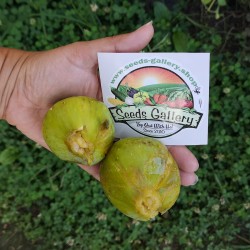
Giant White fig seeds from...
Price
€1.95
SKU: V 19 GWF
Seeds Gallery Com,
5/
5
<h2><strong>Giant White fig seeds from Dalmatia</strong></h2><h2><span style="color: #ff0000;" data-mce-style="color: #ff0000;"><strong>Price for Package of 20 seeds.</strong></span></h2><p>We personally picked and brought this fig from Herzegovina for the first time on August 10.08.2020. As you can see from our pictures, fruits are huge and have an average weight of 100 - 130 grams.</p><p>The white fig is an old Italian variety known as Fico ottato (dottato). It has lush growth and a high pyramidal crown. The white fig is a variety of very high yields.</p><p>The white fig is two-leaved, it is a very old variety of fig. The fruit is very large. The flesh is sweet and the color of the fruit is yellow-green. It is a lush tree, bears abundant fruit, and blooms twice.</p><p>The white fig ripens in late July and early September, and the ripening period is short (one month).</p><p>Spring bloom from degenerated female flowers, fleshy and grows to normal size, but never edible. The summer inflorescence develops an edible fruit, elongated by a short neck, and can reach a weight of over 150 g.</p><p>The fruits are of good quality, suitable for transport and consumption in fresh condition and drying. The flesh is light white under the skin and pale honey on the inside, very juicy, pleasantly sweet.</p><p>White fig very widespread in the Neretva valley in southern and central Dalmatia.</p><p>The fruits have great dietary and nutritional value, and medicinal for stomach diseases, anemia, etc.</p><p>White fig is consumed fresh, dry, like jam, sweet, compote, jelly, and juice.</p><p>Due to its nutritional composition and medicinal properties, the fig tree rises above many types of fruit. We all already know that it is proven to erase wrinkles and rejuvenate, and we also know that the fig or fig leaf used to be the first clothing a long time ago.</p><p>Fig fruits are very nutritious and of high dietary therapeutic value. They are especially in demand in the fresh state during the tourist season, but also processed differently during the year, mostly as dried fruits (dried figs).</p>
V 19 GWF (20 S)

.png)
Variety from Greece

This plant has giant fruits
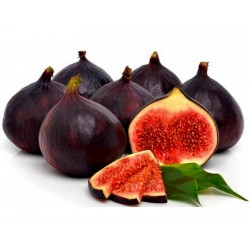
Royal Black Greek Fig Seeds...
Price
€2.15
SKU: V 19 RBG
Seeds Gallery Com,
5/
5
<h2><strong>Royal Black Greek Fig Seeds - Vasilika Mavra (Βασιλικά Μαύρα)</strong></h2>
<h2><span style="color: #ff0000;" class=""><strong>Price for Package of 50 (0,02g) seeds.</strong></span></h2>
<p>Vasilika Mavra or the "Royal Black Greek Fig" is said to be the best tasting of the Greek figs. It is widely grown in Greece. The outside is very dark purple to black and the inside is red.</p>
<p>Our experience has been after a couple of years of growing this variety is that Vasilika Mavra produces many very nice dark purple figs that have dropped before they were mature inside. The size, depth of color, and number have grown year over year for us. We hope as the mother trees mature the figs will hold as other varieties have.</p>
<p>Those fortunate enough to have tried this fig describe it as berry and honey flavored, thick and jammy.</p>
<p>Vasilika Mavra produces super sweet “figs” that continues to the end of the season.</p>
<p>Other names: Royal Black Greek Fig, Βασιλικά Μαύρα,</p><script src="//cdn.public.n1ed.com/G3OMDFLT/widgets.js"></script>
V 19 RBG (0,02g)


Bosnia and Herzegovina variety

This plant has giant fruits
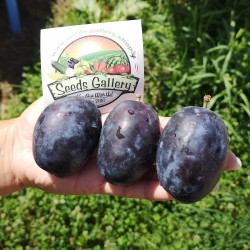
Giant Bosnian Plum Seeds...
Price
€2.55
SKU: V 197 BS
Seeds Gallery Com,
5/
5
<h2><strong>Giant Bosnian Plum Seeds (Prunus domestica)</strong></h2>
<h2><span style="color: #ff0000;" class=""><strong>Price for Package of 5 (6,5g) seeds.</strong></span></h2>
<p>This variety is from Bosnia, and very resistant to diseases. We came across this plum by chance at a farmer's yard and were immediately amazed by both the size and taste of this variety.</p>
<p>Unfortunately, the owner did not know what the name of the variety was, he only knew how to tell us that this plum variety was planted by his great-grandfather and that since then this plum has been kept and planted regularly so that this variety spreads and preserves as much as possible.</p>
<p>We asked him how this plum tolerates winter and low temperatures, and he answered that the temperature in their village drops to minus 24 degrees Celsius, and this was no problem for this plum.</p>
<p>The fruits are really huge and weigh an average of 70 to 85 grams per fruit.</p>
<p>A plum is a fruit of the subgenus Prunus of the genus Prunus. The subgenus is distinguished from other subgenera (peaches, cherries, bird cherries, etc.) in the shoots having terminal bud and solitary side buds (not clustered), the flowers in groups of one to five together on short stems, and the fruit having a groove running down one side and a smooth stone (or pit).</p>
<p>Mature plum fruit may have a dusty-white waxy coating that gives them a glaucous appearance. This is an epicuticular wax coating and is known as "wax bloom". Dried plum fruits are called dried plums or prunes, although, in American English, prunes are a distinct type of plum, and may have pre-dated the fruits now commonly known as plums.</p>
<p>Typically it forms a large shrub or a small tree. It may be somewhat thorny, with white blossom, borne in early spring. The oval or spherical fruit varies in size, but can be up to 8 cm across, and is usually sweet (dessert plum), though some varieties are sour and require cooking with sugar to make them palatable. Like all Prunus fruits, it contains a single large seed, usually called a stone, which is discarded when eating.</p>
<p>Plums are grown commercially in orchards, but modern rootstocks, together with self-fertile strains, training and pruning methods, allow single plums to be grown in relatively small spaces. Their early flowering and fruiting means that they require a sheltered spot away from frosts and cold winds.</p>
<p><strong>Cultivation and uses</strong></p>
<p>The taste of the plum fruit ranges from sweet to tart; the skin itself may be particularly tart. It is juicy and can be eaten fresh or used in jam-making or other recipes. Plum juice can be fermented into plum wine. In central England, a cider-like alcoholic beverage known as plum jerkum is made from plums.</p>
<p>Dried plums (or prunes) are also sweet and juicy and contain several antioxidants. Plums and prunes are known for their laxative effect. This effect has been attributed to various compounds present in the fruits, such as dietary fiber, sorbitol,[7] and isatin.[8] Prunes and prune juice are often used to help regulate the functioning of the digestive system. Dried prune marketers in the US have, in recent years, begun marketing their product as "dried plums". This is due to "prune" having negative connotations connected with elderly people suffering from constipation.</p>
<p>Dried, salted plums are used as a snack, sometimes known as saladito or salao. Various flavors of dried plum are available at Chinese grocers and specialty stores worldwide. They tend to be much drier than the standard prune. Cream, ginseng, spicy, and salty are among the common varieties. Licorice is generally used to intensify the flavor of these plums and is used to make salty plum drinks and toppings for shaved ice or baobing.</p>
<p>Pickled plums are another type of preserve available in Asia and international specialty stores. The Japanese variety, called umeboshi, is often used for rice balls, called onigiri or omusubi. The ume, from which umeboshi are made, is more closely related, however, to the apricot than to the plum.</p>
<p>As with many other members of the rose family, plum seeds contain cyanogenic glycosides, including amygdalin.[10] These substances are capable of decomposing into a sugar molecule and hydrogen cyanide gas. While plum seeds are not the most toxic within the rose family (the bitter almond is the most toxic[citation needed]), large doses of these chemicals from any source are hazardous to human health. On the other hand, plums are considered a source of phytochemical compounds with beneficial effects on health.</p>
<p>Prune kernel oil is made from the fleshy inner part of the pit of the plum.</p>
<p>Plums come in a wide variety of colours and sizes. Some are much firmer-fleshed than others, and some have yellow, white, green or red flesh, with equally varying skin colour.</p>
<p>Though not available commercially, the wood of plum trees is used by hobbyists and other private woodworkers for musical instruments, knife handles, inlays, and similar small projects.</p>
<p>When it flowers in the early spring, a plum tree will be covered in blossoms, and in a good year approximately 50% of the flowers will be pollinated and become plums. Flowering starts after 80 growing degree days.</p>
<p>If the weather is too dry, the plums will not develop past a certain stage, but will fall from the tree while still tiny, green buds, and if it is unseasonably wet or if the plums are not harvested as soon as they are ripe, the fruit may develop a fungal condition called brown rot. Brown rot is not toxic, and very small affected areas can be cut out of the fruit, but unless the rot is caught immediately, the fruit will no longer be edible. Plum is used as a food plant by the larvae of some Lepidoptera, including November moth, willow beauty and short-cloaked moth.</p>
<p><strong>The Serbian plum (Serbian: шљива / šljiva) is the third most produced in the world. In the Balkans, plum is converted into an alcoholic drink named slivovitz (plum brandy) (Serbian: шљивовица / šljivovica).</strong></p>
<p>A large number of plums, of the Damson variety, are also grown in Hungary, where they are called szilva and are used to make lekvar (a plum paste jam), palinka (traditional fruit brandy), plum dumplings, and other foods. The region of Szabolcs-Szatmár, in the northeastern part of the country near the borders with Ukraine and Romania, is a major producer of plums.</p>
<p>The plum blossom or meihua (Chinese: 梅花; pinyin: méihuā), along with the peony, are considered traditional floral emblems of China.</p>
<p>The plum is commonly used in China, Yunnan area, to produce a local plum wine with a smooth, sweet, fruity taste and approximately 12% alcohol by volume.</p>
<p> </p><script src="//cdn.public.n1ed.com/G3OMDFLT/widgets.js"></script>
V 197 BS (6,5g)


Bosnia and Herzegovina variety
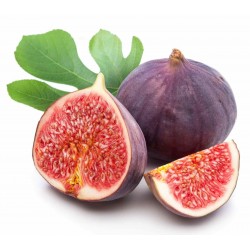
Wild Fig Seeds (from...
Price
€1.85
SKU: V 19 WF
Seeds Gallery Com,
5/
5
<!DOCTYPE html>
<html>
<head>
<meta http-equiv="Content-Type" content="text/html; charset=UTF-8" />
</head>
<body>
<h2><strong>Wild Fig Seeds (from Herzegovina)</strong></h2>
<h2><span style="color: #ff0000;"><strong>Price for Package of 20 seeds.</strong></span></h2>
<p>We brought this fig from Herzegovina and we found it in the mountains in complete wilderness. Its habitat was rocky and dry, which means that it is resistant to poor soil conditions. There are also constant droughts in that part and despite the fact that the plant did not get much water, it did not bother it to grow at all. The fruits are smaller than other varieties of figs and dark purple when ripe. Although the fruits are small they are very tasty and sweet. From reliable sources, we learned that where we took it, the temperature dropped to -15C in winter.</p>
<p>Fig flowers are difficult to spot because they grow inside figs and such flowers are pollinated by the so-called. fig wasps, which develop in the fruits of the wild fig. The difference between a tame and a wild fig is that the tame fig blooms only with female flowers while the wild fig has female and male flowers.</p>
<p>Wild figs grow at an abnormal rate compared to tame ones.</p>
</body>
</html>
V 19 WF (20 S)


This plant is resistant to winter and frost.

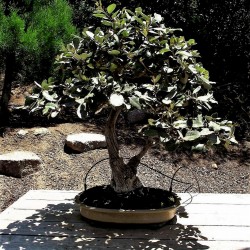
Silverberry wolf-willow...
Price
€2.25
SKU: T 39 EC
Seeds Gallery Com,
5/
5
<!DOCTYPE html>
<html>
<head>
<meta http-equiv="Content-Type" content="text/html; charset=UTF-8" />
</head>
<body>
<h2><strong>Silverberry wolf-willow seeds (Elaeagnus commutata)</strong></h2>
<h2><span style="color: #ff0000;"><strong>Price for Package of 5 seeds.</strong></span></h2>
<p><i><b>Elaeagnus commutata</b></i>, the<span> </span><b>silverberry</b><sup id="cite_ref-1" class="reference"></sup><span> </span>or<span> </span><b>wolf-willow</b>, is a species of<span> </span><i>Elaeagnus</i><span> </span>native to western and boreal<span> </span>North America, from southern<span> </span>Alaska<span> </span>through<span> </span>British Columbia<span> </span>east to<span> </span>Quebec, south to<span> </span>Utah, and across the upper<span> </span>Midwestern United States<span> </span>to<span> </span>South Dakota<span> </span>and western<span> </span>Minnesota.<sup id="cite_ref-grin_2-0" class="reference"></sup><sup id="cite_ref-3" class="reference"></sup><span> </span>It typically grows on dry to moist sandy and gravel soils in steppes, meadows or woodland edges.<sup id="cite_ref-bc_4-0" class="reference"></sup></p>
<p>These plants are<span> </span>shrubs<span> </span>or small<span> </span>trees<span> </span>growing to 1–4 m tall. The<span> </span>leaves<span> </span>are broad lanceolate, 2–7 cm long, silvery on both sides with dense small white scales. The fragrant<span> </span>flowers<span> </span>are yellow, with a four-lobed corolla 6–14 mm long. The<span> </span>fruits<span> </span>are ovoid<span> </span>drupes<span> </span>9–12 mm long, also covered in silvery scales. The fruit pulp is floury in texture and surrounds the single<span> </span>seed.<sup id="cite_ref-bc_4-1" class="reference"></sup></p>
<p>The species is cultivated as an<span> </span>ornamental plant<span> </span>for its silvery foliage.</p>
<p>Both the fruit and seeds of this plant are edible either cooked or raw. The fruit is very astringent unless it is fully ripe. The fruit is a very rich source of vitamins and minerals especially A, C, and E. As well it is a fairly good source of essential fatty acids. These fats are rarely found in fruits.<sup id="cite_ref-pfaf.org_5-0" class="reference"></sup><span> </span>This plant, like legumes, is able to fix nitrogen. When grown in orchards as a companion plant, it has been documented to increase fruit production by ten percent. Traditionally the fibrous bark of this tree has been twisted to make strong ropes and woven into clothing and blankets<span> </span><sup id="cite_ref-pfaf.org_5-1" class="reference"></sup></p>
<p>Sharp-tailed grouse and songbirds eat the fruits.<sup id="cite_ref-6" class="reference"></sup><span> </span>This plant is a food source for sharp-tailed grouse in the winter.<sup id="cite_ref-7" class="reference"></sup><span> </span>Silverberry is an important food for wildlife and it provides over one-quarter of the diet for moose during winter in Montana. It also provides food for deer and elk. It provides cover and nesting sites for mallards and many passerine birds in North Dakota<sup id="cite_ref-8" class="reference"></sup><span> </span>"In rough fescue grasslands, silverberry at 1,000 stems per acre increases forage production."</p>
</body>
</html>
T 39 EC

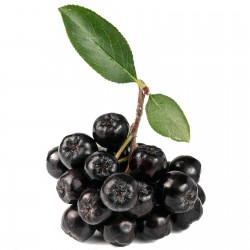
1000 Seeds Chokeberry...
Price
€11.00
SKU: V 29 (4g)
Seeds Gallery Com,
5/
5
<h2><strong>1000 Seeds Chokeberry (Aronia melanocarpa)</strong></h2>
<h2><span style="color: #ff0000;" class=""><strong>Price for Package of 1000 seeds.</strong></span></h2>
<p>Aronia melanocarpa is an extraordinary medicine plant that has been developed in Poland. It has an incredible array of health qualities. Known as Chokeberry, the native Americans used it to prepare pemmican (dried meat). It has a higher concentration of vitamin C than blackcurrants, but it also contains a host of other valuable substances, especially antioxidants, polyphenols, bioflavonoids, and tannins. It is a very hardy and vigorous plant and can survive most conditions.</p>
<h3><strong>Wikipedia</strong>:</h3>
<p><i><b>Aronia</b></i><span> </span>is a genus of<span> </span>deciduous<span> </span>shrubs, the<span> </span><b>chokeberries</b>, in the family<span> </span>Rosaceae<span> </span>native to eastern North America and most commonly found in wet woods and swamps.<span> </span>The genus is usually considered to contain two or three<span> </span>species, one of which is<span> </span>naturalized<span> </span>in Europe.</p>
<p>Chokeberries are cultivated as<span> </span>ornamental plants<span> </span>and as<span> </span>food products. The sour berries, or<span> </span><b>Aronia berries</b>, can be eaten raw off the bush, but are more frequently processed. They can be found in wine, jam, syrup, juice, soft spreads, tea, salsa,<span> </span>chili starters, extracts, beer, ice cream,<span> </span>gummies,<span> </span>and<span> </span>tinctures.<span> </span>The name "chokeberry" comes from the<span> </span>astringency<span> </span>of the fruits, which creates the sensation of making one's mouth pucker.</p>
<p><i>Chokeberries</i><span> </span>are often mistakenly called<span> </span><i>chokecherries</i>, the<span> </span>common name<span> </span>for<span> </span><i>Prunus virginiana</i>. Further adding to the ambiguity, a<span> </span>variety<span> </span>of<span> </span><i>Prunus virginiana</i><span> </span>is<span> </span><i>melanocarpa</i>,<sup id="cite_ref-9" class="reference">[9]</sup><span> </span>and readily confused with<span> </span><i>black chokeberry</i><span> </span>because it is commonly referred to as "black chokeberry" or "aronia". Aronia berries and chokecherries both contain<span> </span>polyphenolic<span> </span>compounds, such as<span> </span>anthocyanins, yet the two plants are distantly related within the family Rosaceae.</p>
<p>The<span> </span>leaves<span> </span>are alternate, simple, and<span> </span>oblanceolate<span> </span>with<span> </span>crenate<span> </span>margins and<span> </span>pinnate<span> </span>venation; in autumn the leaves turn a bold red color. Dark<span> </span>trichomes<span> </span>are present on the upper midrib surface. The<span> </span>flowers<span> </span>are small, with 5<span> </span>petals<span> </span>and 5<span> </span>sepals, and produced in<span> </span>corymbs<span> </span>of 10–25 together.<span> </span>Hypanthium<span> </span>is urn-shaped. The fruit is a small<span> </span>pome, with an<span> </span>astringent<span> </span>flavor.</p>
<p><i>Aronia</i><span> </span>has been thought to be closely related to<span> </span><i>Photinia</i>, and has been included in that genus in some classifications,<sup id="cite_ref-10" class="reference">[10]</sup><span> </span>but botanist Cornelis Kalkman observed that a combined genus should be under the older name<span> </span><i>Aronia</i>.<sup id="cite_ref-Kalkman_11-0" class="reference">[11]</sup><span> </span>The combined genus contains about 65 species.<sup id="cite_ref-weakley_12-0" class="reference">[12]</sup><span> </span>In 2004, Kalkman expressed doubt about the<span> </span>monophyly<span> </span>of the combined group, and new molecular studies confirm this.<sup id="cite_ref-Potter_13-0" class="reference">[13]</sup><sup id="cite_ref-Campbell_14-0" class="reference">[14]</sup><span> </span>They do not place these two genera together or even near one another.</p>
<p>In eastern North America are two well-known species, named after their fruit color, red chokeberry and black chokeberry, plus a purple chokeberry whose origin is a natural hybrid of the two.<sup id="cite_ref-weakley_12-1" class="reference">[12]</sup><span> </span>A fourth species,<span> </span><i>Aronia mitschurinii</i>, that apparently originated in cultivation, is also known as<span> </span><i>Sorbaronia mitschurinii</i>.</p>
<h2><span class="mw-headline" id="Cultivation">Cultivation</span></h2>
<p>Aronia is considered cold hardy and heat tolerant in<span> </span>USDA<span> </span>Zones 3 to 8.<sup id="cite_ref-usda_17-0" class="reference">[17]</sup><sup id="cite_ref-18" class="reference">[18]</sup><span> </span>Aronia plants grow well both in<span> </span>orchard-type rows or set as<span> </span>landscape<span> </span>elements, including several varieties in 3 to 12 foot heights.<sup id="cite_ref-usda_17-1" class="reference">[17]</sup></p>
<h3><span class="mw-headline" id="Products_and_uses">Products and uses</span></h3>
<p>The chokeberries are attractive<span> </span>ornamental plants<span> </span>for gardens. They are naturally understory and woodland edge plants, and grow well when planted under<span> </span>trees. Chokeberries are resistant to drought, insects, pollution, and disease. A number of<span> </span>cultivars, including<span> </span><i>A. arbutifolia</i><span> </span>'Brilliant' and<span> </span><i>A. melanocarpa</i><span> </span>'Autumn magic', have been selected for their striking fall leaf color.</p>
<p>An aronia wine is made in<span> </span>Lithuania. In<span> </span>Poland, aronia berries are added to jams and juices or dried to make a herbal<span> </span>tea<span> </span>sometimes blended with other ingredients, such as<span> </span>blackcurrant.<sup id="cite_ref-mckay_19-0" class="reference">[19]</sup><span> </span>In<span> </span>Bosnia and Herzegovina, the berries are sold fresh and frozen or made into juices, jams and teas.<sup id="cite_ref-Fresh_Fruit_Portal_20-0" class="reference">[20]</sup><span> </span>Aronia is also used as a<span> </span>flavoring<span> </span>or<span> </span>colorant<span> </span>for beverages or yogurts.<sup id="cite_ref-mckay_19-1" class="reference">[19]</sup><span> </span>Juice from the ripe berries is<span> </span>astringent, semi-sweet (moderate sugar content), sour (low<span> </span>pH), and contains a low level of<span> </span>vitamin C.<sup id="cite_ref-21" class="reference">[21]</sup><span> </span>The berries have a tart<span> </span>flavor<span> </span>and, in addition to juice, can be baked into breads.<sup id="cite_ref-mckay_19-2" class="reference">[19]</sup><span> </span>In the United States and Canada, aronia<span> </span>juice concentrate<span> </span>is used in manufactured juice blends.</p>
<h3><span class="mw-headline" id="Polyphenol_content">Polyphenol content</span></h3>
<p><i>Aronia melanocarpa</i><span> </span>(black chokeberry) has attracted scientific interest due to its deep purple, almost black<span> </span>pigmentation<span> </span>that arises from dense contents of<span> </span>polyphenols, especially<span> </span>anthocyanins. Total polyphenol content is 1752 mg per 100 g dry weight,<sup id="cite_ref-Phenol-Explorer_22-0" class="reference">[22]</sup><span> </span>anthocyanin content is 1480 mg per 100 g dry weight, and<span> </span>proanthocyanidin<span> </span>concentration is 664 mg per 100 g fresh weight.<sup id="cite_ref-Wu_23-0" class="reference">[23]</sup><sup id="cite_ref-24" class="reference">[24]</sup><span> </span>These values are among the highest measured in plants to date. The black aronia species contains higher levels of anthocyanins than purple (<i>Aronia prunifolia</i>) or red aronia (<i>Aronia arbutifolia</i>), whereas red and purple aronia are richer in phenolic acid and proanthocyanins.<sup id="cite_ref-pmid23941506_25-0" class="reference">[25]</sup></p>
<p>The plant produces these pigments mainly in the leaves and skin of the berries to protect the pulp and seeds from constant exposure to<span> </span>ultraviolet radiation<span> </span>and production of<span> </span>free radicals.<sup id="cite_ref-simon_26-0" class="reference">[26]</sup><sup id="cite_ref-27" class="reference">[27]</sup><sup id="cite_ref-28" class="reference">[28]</sup><span> </span>By absorbing<span> </span>UV<span> </span>rays in the<span> </span>blue-purple spectrum, leaf and skin pigments filter intense sunlight, serve antioxidant functions and thereby have a role assuring regeneration of the species. Brightly colorful pigmentation also attracts birds and other animals to consume the fruit and disperse the seeds in their droppings.<sup id="cite_ref-simon_26-1" class="reference">[26]</sup><sup id="cite_ref-29" class="reference">[29]</sup></p>
<p>Analysis of polyphenols in chokeberries has identified the following individual chemicals (among hundreds known to exist in the plant kingdom):<span> </span>cyanidin-3-galactoside, cyanidin-3-arabinoside,<span> </span>quercetin-3-glycoside,<span> </span>epicatechin,<span> </span>caffeic acid,<span> </span>delphinidin,<span> </span>petunidin,<span> </span>pelargonidin,<span> </span>peonidin, and<span> </span>malvidin.<sup id="cite_ref-Wu_23-1" class="reference">[23]</sup><sup id="cite_ref-pmid23941506_25-1" class="reference">[25]</sup><sup id="cite_ref-30" class="reference">[30]</sup><span> </span>All these except caffeic acid are members of the<span> </span>flavonoid<span> </span>category of phenolics.</p>
<p>For reference to phenolics, flavonoids, anthocyanins, and similar plant-derived phytochemicals,<sup id="cite_ref-Phenol-Explorer_22-1" class="reference">[22]</sup><span> </span>Wikipedia has a<span> </span>list of phytochemicals and foods in which they are prominent.</p>
<div>
<table border="1" cellspacing="0" cellpadding="0">
<tbody>
<tr>
<td colspan="2" valign="top" width="100%">
<p><span style="color: #008000;"><strong>Sowing Instructions</strong></span></p>
</td>
</tr>
<tr>
<td valign="top" nowrap="nowrap">
<p><span style="color: #008000;"><strong>Propagation:</strong></span></p>
</td>
<td valign="top">
<p><span style="color: #008000;">Seeds</span></p>
</td>
</tr>
<tr>
<td valign="top" nowrap="nowrap">
<p><span style="color: #008000;"><strong>Pretreat:</strong></span></p>
</td>
<td valign="top">
<p><span style="color: #008000;">soak in water for 8- 12 hours </span></p>
</td>
</tr>
<tr>
<td valign="top" nowrap="nowrap">
<p><span style="color: #008000;"><strong>Stratification:</strong></span></p>
</td>
<td valign="top">
<p><span style="color: #008000;">1 months in moist sowing mix at 2-5 ° C refrigerator</span></p>
</td>
</tr>
<tr>
<td valign="top" nowrap="nowrap">
<p><span style="color: #008000;"><strong>Sowing Time:</strong></span></p>
</td>
<td valign="top">
<p><span style="color: #008000;">all year round</span></p>
</td>
</tr>
<tr>
<td valign="top" nowrap="nowrap">
<p><span style="color: #008000;"><strong>Sowing Depth:</strong></span></p>
</td>
<td valign="top">
<p><span style="color: #008000;">1 cm</span></p>
</td>
</tr>
<tr>
<td valign="top" nowrap="nowrap">
<p><span style="color: #008000;"><strong>Sowing Mix:</strong></span></p>
</td>
<td valign="top">
<p><span style="color: #008000;">Coir or sowing mix + sand or perlite</span></p>
</td>
</tr>
<tr>
<td valign="top" nowrap="nowrap">
<p><span style="color: #008000;"><strong>Germination temperature:</strong></span></p>
</td>
<td valign="top">
<p><span style="color: #008000;">20 ° C</span></p>
</td>
</tr>
<tr>
<td valign="top" nowrap="nowrap">
<p><span style="color: #008000;"><strong>Location:</strong></span></p>
</td>
<td valign="top">
<p><span style="color: #008000;">bright + keep constantly moist not wet</span></p>
</td>
</tr>
<tr>
<td valign="top" nowrap="nowrap">
<p><span style="color: #008000;"><strong>Germination Time:</strong></span></p>
</td>
<td valign="top">
<p><span style="color: #008000;">2-8 weeks</span></p>
</td>
</tr>
<tr>
<td valign="top" nowrap="nowrap">
<p><span style="color: #008000;"><strong>Watering:</strong></span></p>
</td>
<td valign="top">
<p><span style="color: #008000;">Water regularly during the growing season</span></p>
</td>
</tr>
<tr>
<td valign="top" nowrap="nowrap">
<p><span style="color: #008000;"><strong> </strong></span></p>
</td>
<td valign="top">
<p><br><span style="color: #008000;"><em>Copyright © 2012 Seeds Gallery - Saatgut Galerie - Galerija semena. </em><em>All Rights Reserved.</em><em></em></span></p>
</td>
</tr>
</tbody>
</table>
</div>
<div>
<div style="text-align: center;">Genus: Aronia</div>
<div style="text-align: center;">Species: melanocarpa</div>
<div style="text-align: center;">Common Name: Black Chokeberry</div>
<div style="text-align: center;">Other Name: Chokeberry, Gueles Noires</div>
<div style="text-align: center;">Pre-treatment: required</div>
<div style="text-align: center;">Zone Hardiness Cold: 3</div>
<div style="text-align: center;">Zone Hardiness warm: 8</div>
<div style="text-align: center;">Plant Type: Small Shrub</div>
<div style="text-align: center;">Growth rate: medium</div>
<div style="text-align: center;">Vegetation type: deciduous</div>
<div style="text-align: center;">Leaf /Flower color: Green/White</div>
</div><script src="//cdn.public.n1ed.com/G3OMDFLT/widgets.js"></script>
V 29 (4g)





